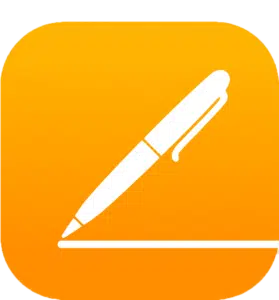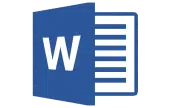Developing a resume becomes challenging and frustrating. We get it: you don’t want to struggle and create a low-quality resume, so how do you work around it?
Others have faced these problems, but you have resources available to help.
Doing so requires you to understand what should a resume look like, so you’ll focus on the exemplary aspects and prepare it.
As you go through a guide and understand the parts of a resume, you’ll prepare it for employers and seek more job opportunities.
What Should a Resume Look Like?
You’ll naturally wonder what to put on a resume while considering what it should look like compared to other applicants.
Ensure you review the various resume styles and templates to determine the best approach.
What is the Best Resume Style?
As you review the resume styles, you’ll notice three common types people use.
- Chronological resume
- Functional or skills resume
- Combination resume
Chronological resumes work best if you want to emphasize your most recent work to employers. Functional or skill resumes work for people who wish to emphasize their best skills to employers. Combination resumes work if you plan to show off your skills and work experience.
The best option depends on the employer, so look at their job listings and see if they emphasize skills, work experience, or both.
What is the Best Resume Template?
You’ll want to look through the best resume builders to create one. If you want a free option, you can go with Zety, but if you want a paid builder, you should try LiveCareer. You also have other options, such as Indeed, Jobscan, Resume Genius, and more.
What Should a Resume Include?
Even if you have the best templates available and find an ideal format, you must understand what a resume should look like compared to others.
Doing so means including crucial information so the employer knows what you offer, accomplished, and why they should hire you.
1. Contact Information
How will they schedule an interview or offer you the job if they can’t contact you? You must provide your contact information when you create a resume. You can make it easy by including your contact information at the top under your name.
Most businesses contact people through phone calls, text messages, or emails, so provide your phone number and email address.
2. Work Experience
As you review resources and information on what to add to your resume, you’ll see people mention work experience. Many jobs expect you to have some experience before applying for the position, though others may look for entry-level employees.
Either way, you should include your work experience to show a record of your jobs in the field so they know what to expect from you.
3. Education
On top of work experience, employers want to know about your education. They don’t want you only to mention your degrees but where you got them, and the years you attended school. Doing so shows them your capabilities, as you mention your GPA.
Ultimately, they want a statement from you mentioning your education so they know you have the credentials to do the job.
4. Skills and Certifications
You can also mention any skills you developed alongside certifications. For example, if you want to work in law, you should mention that you passed the BAR exam along with information confirming you can practice law in the area.
As for skills, you can list and say them, such as coding or web design.
What Not to Put on a Resume
While you have details you should include on a resume, you have the information you shouldn’t add. Ensure you avoid various points so you don’t make your resume look bad, poorly organized, or leave any negative impressions on potential employers.
1. Too Much Personal Information
While you must share professional details to secure a job, you shouldn’t share too much personal information. Keep the resume professional and have it highlight your work experience and other essential details.
Adding personal information, like your hometown or address, won’t help you get more positions, and it takes up space on your resume you could use for something else.
2. Your Photo
While adding a photo to your resume may seem like a good idea, people may form negative opinions about you without reading it. Some employers also don’t like it when people add photos since they take up space and draw attention away from the crucial details.
Since images hurt your resume more than they help, you should avoid them.
3. Negative Comments About a Former Employer
Always remain professional as you talk about former employers. If you say negative things about them, your potential employers won’t want to hire you since they’ll think you’ll do the same thing to them once you no longer work there.
Instead, you should focus on yourself, how the work experience helped you, and build yourself rather than tearing others down.
4. Spelling or Grammar Errors
Although it seems unnecessary, spelling or grammar errors can cause employers to turn you down. Ensure you read through your resume and look for any problems. You should also have a friend look through it to see if they come across any errors.
Once you confirm it has no issues, you should put it through a grammar checker to look for better phrasing or other problems.
How Do I Make an Impressive Resume?
After you go through your resume to add important aspects while removing parts you shouldn’t include, you’ll need to improve it. If you can’t figure out how to improve your resume and make it impressive, you should utilize crucial tips to improve it continuously.
1. Keep It Short and Clear
You’ll want to identify the ideal length of a resume while you create one. Most employers won’t spend long looking at your resume, so if you offer them tons of pages when they didn’t request it, they may not bother reading it.
You want to stick with one or two pages, so they can skim through it quickly and get the necessary information.
2. Highlight Your Accomplishments
The process also involves focusing on your accomplishments and exemplifying them. Do your best to highlight specific moments where you performed well, such as receiving employee of the month or reaching a milestone with your work.
If you bring up your accomplishments, you exemplify your actions, making it clear to employers what you can do for them.
3. Include an Objective
Some people add objectives to their resumes to get their main points across. Objectives go at the top of resumes, so employers see them immediately and understand what you want them to know about you.
They work well since you can quickly summarize your background and strengths, increasing your odds of securing a position.
4. Include Proof of Your Results
You also must prove your capabilities and when you provide results. Try to add bullet points to different sections or include an accomplishments portion. Doing so shows your expertise and when you performed impactful actions that’ll impress potential employers.
If you can prove you offer results, employers have a reason to hire you, so highlight those accomplishments and efforts in your resume.
5. Use Unique Language
Employers come across multiple words, such as dependable, hardworking, and similar points. Instead of using those words, you should think of unique language that compliments your skills while showing that you know how to present yourself.
Using unique language depends on your experience and background, so it may not hurt to look up common words and find similar options.
6. Choose the Right Format
If you can’t identify an ideal format, you should go with a combination resume. Combination resumes allow you to present your work and education in order while including details about your skills as bullet points under the sections.
However, you could use the other formats based on your situation, so try to make each one and see what works best.
Frequently Asked Questions
As you consider what should a resume look like, you’ll come across frequently asked questions (FAQs). As you go through the FAQs, you’ll understand what you should focus on with your resume to make it as appealing as possible.
What do employers want from a resume?
Employers look for experience, skills, volunteer work, and similar resume sections. They’ll most likely scan through the document and look for critical points, so you’ll want to keep it concise and easy to read. You can do so by keeping everything organized.
How far back should a resume go?
The information depends on your experience and what you plan to share. For example, you can have it back up to 10 years if it all applies to the work. Generally speaking, you want to go as far back as what applies to the job.
Wrapping Up
If you understand what should a resume look like, you’ll craft it appealingly. Doing so requires you to go through the different styles and templates, what you should include, what you shouldn’t have, and how to make it as good as possible.
Ensure you ask questions in the comments section to receive more advice. Overall, you should make your resume clear, concise, and focused on the details employers want to know. Doing so will help you strengthen your resume and continuously improve it.








